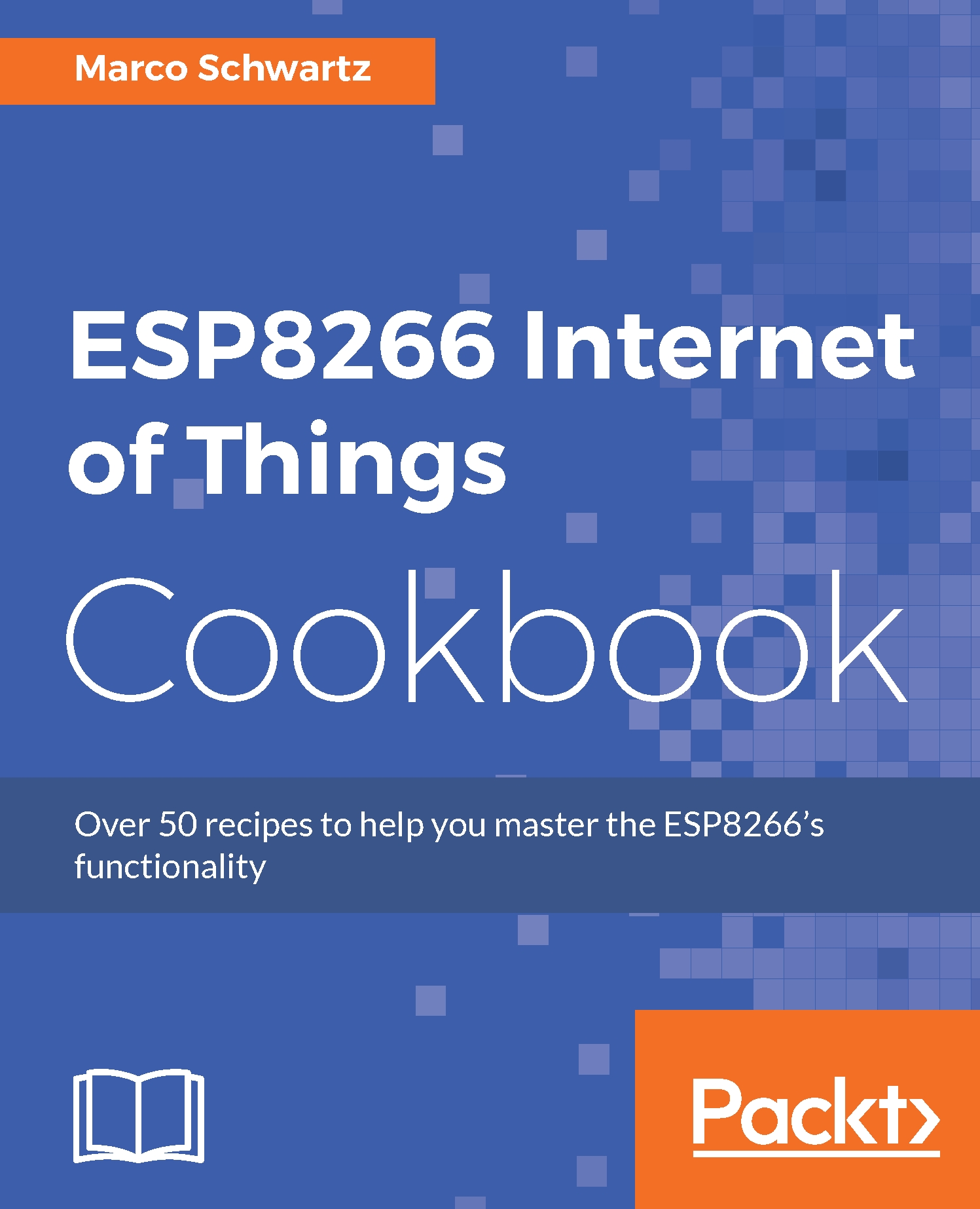Sending data to the cloud using MicroPython
This recipe is going to introduce us to the IoT using MicroPython. We will use MicroPython to send measurement data to dweet.io from the ESP8266. Through that, you will learn some IoT basics and how to implement them using MicroPython.
Getting ready
The hardware setup will be the same as the one you used in the previous recipe. The only difference is that we will be connecting and sending data to dweet.io. dweet.io is a cloud server that you can use to easily publish and subscribe to data. It does not require you to sign up or set it up. All you need to do is publish and you are good to go.
A simple HAPI web API is used to send data from your thing to the cloud. Sending data is accomplished by calling a URL such as https://dweet.io/dweet/for/my-thing-name?hello=world.
Replace my-thing-name in the URL with the name of your choice and then proceed to log data online. The query parameters you add to the URL will be added as key value pairs to the dweet...




































































